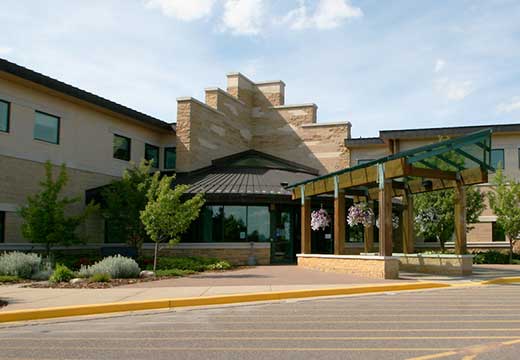Education
Forest County Potawatomi
Emma Carlson
Introduction
One of the many issues facing Native people in the United States is that of education. Because of a history of oppression and cultural genocide at the hands of boarding schools designed to "civilize" Native people, today future generations are still dealing with the trauma. The goal of this page is to look at how one tribe, the Forest County Potawatomi, have gone above and beyond for their students to help remedy this issue by increasing both the cultural relevancy of their schooling, and the quality of their experience.

The Forest County Potawatomi have sought to provide the best services for their people across the board, and education is no different. The education department is led by Division Administrator Thomas Boelter, who leads a staff of 14-15 dedicated workers who keep track of the success of each individual student in order to maintain positive relationships with students and family. Forest County has also recently built a new Community Recreation Center, a place for members of the community to come together and enhance students' educational opportunities (Forest County Potawatomi).
Unfortunately, most studies done on the subject of Native youth education have been limited and filled with conjecture, often looking for once source of the problem instead of seeing it as a complex and multifaceted issue requiring an equally thoughtful solution. The studies that have looked more deeply at the issue have found that culturally based educational programs, when in conjunction with parental involvement, quality of instruction, and school climate, can greatly enhance the success of education of native youth (Powers et al. 2003). Cultural programs on their own will not be successful without the intersection of all of the aforementioned areas, and Forest County's Education Department has sought to address each of these issues in the last 8 years.
History: The Legacy of Boarding Schools

"From virtually the beginning of formal education efforts directed at Native Americans by European settlers and eventually the United States, the aim was the assimilation of Indian children into Anglo-American society" (State, 2008).
Today, many members of the Forest County Potawatomi can speak of their parents' and grandparents' experiences at residential boarding schools, many being sent to the Lac du Flambeau school in Lac du Flambeau, Wisconsin alongside their Ojibwe neighbors and relations.
While many outside of Indian Country may be quick to write off boarding schools as a relic of the past, the reality is that boarding schools have had impacts that still persist to this day and have continued through the generations. Native children were separated from their families and tribes, forced to have their hair cut and wear uniforms, and punished for speaking their language. This historical trauma is reflected today in a mistrust of education and schooling that persists in many communities to this day.
Present Day

In the past 8 years, the Forest County Potawatomi have sought to completely overhaul their educational programming in order to address long term issues, such as attendance and overall feelings towards education, caused by the traumatic experiences of boarding schools. Thomas Boelter, the current Division Administrator of Education for Forest County Potawatomi, sought to create an education department that was capable of helping students at the root of the problem, and that came from more involvement from the tribe, and more importantly, more involvement from students' families. I had the opportunity to interview Mr. Boelter for this project, and the following section is information he provided me with directly. At the time, the largest issue Forest County students were having at the local schools was with attendance, at one point as low as 40-60% average attendance. Much of this attitude towards education was caused by the generational trauma from boarding schools, and therefore was not only a student problem but a problem that started at home.
Getting Started
In the past, the tribe had had no hands on access to student records for their students attending local schools because of FERPA (U.S. DoE, 2018). By working directly with the local schools, and because of their status as a sovereign nation, the Education Department was able to get records for all of their students in the local school districts. With these records, they were able to put in place measures that would ensure that each student was being given the tools they need to succeed. Any time a student faces issues with behavior in school, Mr. Boelter makes a point to work with the student and family when they meet with members of the school. These types of actions help foster a more positive environment for students and families, and to show families that the tribe is working directly with the school to ensure the best for their children. These record have also been essential to allocating money that the tribe receives through the Johnson O'Malley program (BIE). By knowing where and how students are struggling, the tribe has been able to pinpoint the best use of their educational funds. In doing this, Mr. Boelter was able to direct those funds into creating a community center with it's own teachers as a space where students can go outside of school to get the help that they need within their own community.
Attendance
Tribal Sovereignty has also allowed the tribe to enact their own truancy policy, one that is aimed at getting students back in school as opposed to punishing them for not being in school. The truancy policy deviates from the typical, which would generally have students waiting 2-3 months before ever seeing a judge and imposing a monetary fine, one which generally causes more trouble for families who are struggling. Instead, the tribe enacts immediate action meeting with the student and family, and allowing the student the opportunity to clear their truancy record if they demonstrate 30 days of a good record.
Building Positive Relationships
Other issues were resolved by working in partnership with the local school districts. Originally, Crandon schools had a tutoring policy where students who misbehaved would be sent to tutors instead, losing valuable class time. With the freedom to work with both the school and the tribe, the tribe was able to relegate the tutoring program to only after school. In this way misbehaving students would be sent to the office and the issue would be dealt with, so they could return to the classroom. The aforementioned tutoring policy also had another side effect: a lack of relationship between student and teacher. Instead of learning to work with individual students and understand them, teachers could just send them away. By doing away with this the teachers had to take more accountability for individual students and learn what they actually needed to succeed. "Such connectedness is significantly associated with better emotional health among students as well as lower levels of involvement in health-risking behaviors such as substance use and self-directed and interpersonal violence" (Powers et al., 2003).
The partnership between the local schools and the tribe has been beneficial on both ends. When Crandon schools needed new computers, the tribe readily made the donation. Since working towards this partnership, the tribe has been more involved with the hiring of new teachers. The Crandon district in particular has written a policy of open communication with the tribe and the Indian Education Committee, and organizes regular meetings with school officials so they can continue to work together and remain up to date in order to create the best possible future for Forest County Potawatomi students.
[Thomas Boelter, Personal Communication. April 1st, 2019.]
Looking Forward
The Forest County Potawatomi have demonstrated in practice what studies have shown to be key to the success of Native students: positive relationships with students and families, a positive school environment, high quality of instruction, and cultural programming (Powers et al. 2003). Cultural programming can take many different forms, such as resources like the Community Center or the tribe's unique truancy policy, or the ability to integrate cultural knowledge into the classroom in schools that are fully Native run, like the Milwaukee Indian Community School (a K-8 school which some members of the Forest County Potawatomi attend) (ICS, 2019).

In many ways, Forest County is a model for tribal educational programming across the country. Today the tribe has 95% graduation rate for their students, with 80% going on to higher education. Many of their programs are focused on helping students find a passion for learning and see education as a path to their future, all based in their own community. One of these programs is a summer youth employment program, where students can job shadow in a field that they are interested in across the many facilities that the tribe has in place. Only students who maintain a good GPA and attendance can take part in this program, which has also helped as a motivator for struggling students. In 2017, Mr. Boelter was awarded "Outstanding American Indian Educator of the Year" by the Wisconsin Indian Education Association as well as the State Superintendent's 2017 Friend of Education Award for the work that he has done for his community. Mr. Boelter hopes in his future work as Division Administrator to continue inspiring students to pursue college and trade school, and to continue to reach each and every one of his students to ensure their success.
[Thomas Boelter, Personal Communication. April 1st, 2019.]
Further Reading
Forest County Potawatomi: Education
Journal of American Indian Education
Wisconsin Indian Education Association
Milwaukee Indian Community School
Sources
Powers, K., Potthoff, S. J., Bearinger, L. H., & Resnick, M. D. (2003). Does Cultural Programming Improve Educational Outcomes for American Indian Youth? Journal of American Indian Education,42(2), 17-49. Retrieved April 9, 2019, from https://jaie.asu.edu/sites/default/files/422_2003_2_powers_et_al.pdf.
Forest County Potawatomi. (n.d.). Message from the Division Administrator. Retrieved April 9, 2019, from https://education.fcpotawatomi.com/message-from-the-director/
The Harvard Project on American Indian Economic Development (2008). The State of the Native Nations Conditions Under U.S. Policies of Self-Determination. New York: Oxford University Press.
U.S. Department of Education. (2018, March 01). Family Educational Rights and Privacy Act (FERPA). Retrieved from https://www2.ed.gov/policy/gen/guid/fpco/ferpa/index.html
Bureau of Indian Education: Johnson-O'Malley. (n.d.). Retrieved April 6, 2019, from https://www.bie.edu/JOM/
Crandon School District. (2018, May 14). Policy 886, Tribal and Parental Involvement in Decision Making. Retrieved from https://www.sdofcrandon.com/district/policies/800%20POLICY%20SERIES%20-%20UPDATED%205%2014%202018.pdf
Indian Community School. (2019). ICS At-A-Glance. Retrieved April 10, 2019, from http://ics-edu.org/about-us/ics-at-a-glance/
Image Sources
Image 1: Forest County Potawatomi Seal [retrieved from wikimedia commons]
Image 2: Lac du Flambeau Boarding School [retrieved from wikimedia commons]
Image 3: Thomas Boelter [retrieved from fcpotawatomi.com]
Image 4: Forest County Potawatomi Heal and Wellness Center [retrieved from fcpotawatomi.com]